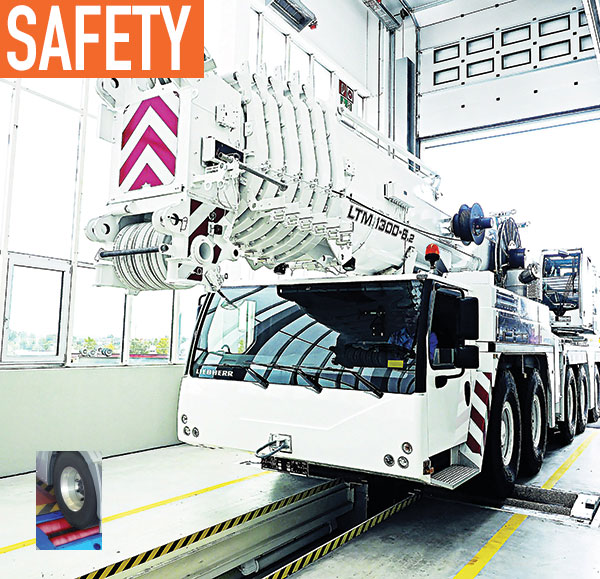In recent travels, I have had the chance to visit several heavy-duty truck operations. No two locations were alike. I’ve seen everything from a small operation with eight trucks serviced in a two-bay garage to a mass fleet operator with three buildings and 45 shop bays, and everything in-between. Not surprisingly, each location has an opinion on what fleet maintenance is and how it should be done. However, two aspects remain the same: safety and profitability.
With safety and profitability as a shared goal amongst service managers and fleet operators, this article is intended to identify and highlight key advantages of incorporating a performance based brake tester (PBBT) into routine maintenance operations to assist in achieving these goals.
WHAT IS A PBBT?
A PBBT is a system that measures a vehicle’s brake performance. The results measured by a PBBT are an industry-wide accepted reference that has been used for safety inspections and preventive maintenance for decades. According to the Commercial Vehicle Safety Alliance (CVSA), a PBBT, “Can determine brake forces without restriction to the brake type (disc or drum) or energy supply (air, hydraulic, or electric). In addition, PBBTs based on mechanical or electronic decelerometers can assess the overall vehicle braking capability through a stopping performance test in which deceleration and/or stopping distance is obtained, also independent of brake type or application method.”
IMPLEMENTING TESTS
A safe and reliable braking system is one of the most important functions of a vehicle. Unfortunately, in the US, brake testing and brake maintenance are often performed only after a brake component has failed. This is why organizations, such as the CVSA and the Federal Motor Carrier Safety Administration (FMCSA) have emphasized the need for effective routine brake testing.

LONG-TERM SAVINGS
How can a PBBT decrease long-term costs? By regularly checking actual brake performance, preventive brake maintenance can be performed, therefore extending the life of major system components. Having brakes work properly will not only save on brake pads and rotors, but also on tires. One of the leading causes of tires exploding is overheated brake systems, even on flat roads. Brakes that nearly lock—and drivers noticing them too late—often result in serious damage.
Additionally, incorporating a PBBT into regular maintenance routines has the potential for serious savings on insurance premiums. According to the CVSA, one fleet’s PBBT purchase was paid for in the first year through premium reduction.
IMPROVED SAFETY
How can a PBBT improve safety? The fleet industry needs to be especially aware that having an efficient braking system is a must, not only for their drivers but also for the other drivers on roadways. Just like in the case of medical conditions, early detection of brake failure is key for successfully identifying faulty components so that repairs can be performed in due time, before any major components are badly damaged. Failed brakes are one of the leading causes of death on US highways, and the CVSA has the numbers to prove it.
BETTER FUEL EFFICIENCY
A key to increasing the profitability of your fleet is by controlling rising fuel costs. Fuel consumption can rank high nowadays, especially in different parts of the country. One way of controlling these costs is making certain brakes are working as efficiently as possible. Brakes have a direct correlation to fuel consumption. A truck with a well maintained brake system has significantly better mpg.
PREPARE NOW
The long-term benefits of a PBBT are clear. Proper brake testing should be considered an essential part of routine maintenance for optimizing the safety and profitability of your fleet. As safety regulations and enforcements gradually go into effect, now is the time to prepare and consult a specialist to find out what is right for you.
ABOUT THE AUTHOR
Radu Pop is the national accounts manager at MAHA USA. Find out more about MAHA USA, visit www.maha-usa.com.
_______________________________________________________________________
MODERN WORKTRUCK SOLUTIONS: MARCH 2017 ISSUE
Did you enjoy this article?
Subscribe to the FREE Digital Edition of Modern WorkTruck Solutions magazine.
![]()




